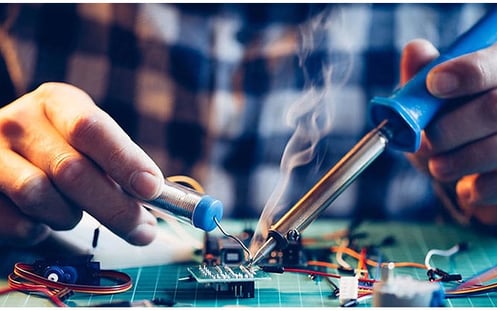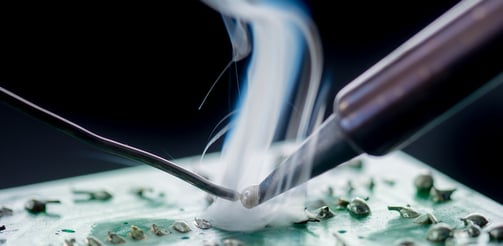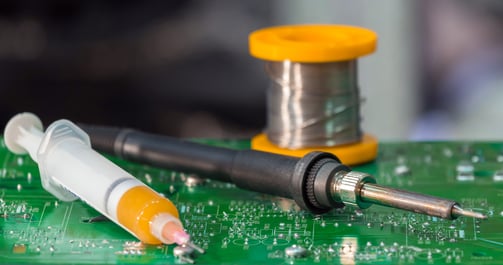Soldering Basics
Learning to solder
ELECTRONICS
In my continuous pursuit of acquiring new skills, one of my objectives this year was to acquire soldering skills. My fascination with electronics deepened during my undergraduate studies when I took Electronics 101, and ever since, I have had an ongoing desire to expand my knowledge and expertise in this field.
Engaging in electronics as a hobby can be quite costly, as it necessitates several essential pieces of equipment such as an oscilloscope, function generator, multimeters, soldering iron and accessories, breadboards, resistors, transistors, capacitors, wire cutters, and strippers, to name a few. Moreover, as you advance in your projects, you may need more specialized tools and equipment tailored to the specific tasks at hand. However, I consider myself fortunate to have a partner who is an electrical engineer and has already amassed the required equipment, all conveniently accessible in my garage. Furthermore, he has graciously offered to teach me, and it would be unwise not to seize this opportunity.
Before commencing my soldering journey, he kindly compiled a YouTube playlist for me, covering some fundamental aspects to familiarize myself with. Here are a few noteworthy points from my notes.
The Basics
Definition of Soldering:
Soldering involves joining two electrical components by melting a metal alloy known as solder.
In the US, the pronunciation of "solder" doesn't include the "l," while other countries pronounce it with the "l," although the reason for this difference remains unknown.
Types of Solder Wire:
Solder alloys come in various compositions, including tin, copper, and lead.
Rosin Core Solder:
Rosin core solder indicates that the solder wire contains rosin flux within its core.
Flux in Soldering:
Flux is an additional component used in soldering.
Its purpose is to clean metal surfaces, remove oxidation, and prepare them for soldering by enabling proper adhesion.
There are different types of flux, ranging from thin ones that evaporate during work to thicker ones that may leave a sticky residue, occasionally having corrosive properties.
Notes: Common Mistakes
Misconception about Soldering Technique:
Many individuals mistakenly believe that the objective of soldering is to melt the solder onto the components being joined, resembling the act of icing a cake.
However, the correct approach involves heating both components to be fused and then melting the solder into the joint.
Less is More:
It is important to exercise restraint when using solder. Only apply the necessary amount of solder to establish the connection.
Using excessive solder can result in the unintentional bridging of the connection with nearby components, potentially causing issues.






